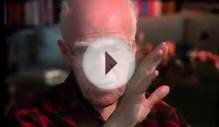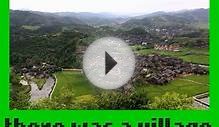
The STS movement has a long history in science education reform, and embraces a wide range of theories about the intersection between science, technology and society (Solomon and Aikenhead, 1994; Pedretti 1997). Over the last twenty years, the work of Peter Fensham, the noted Australian science educator, is considered to have heavily contributed to reforms in science education. Fensham's efforts included giving greater prominence to STS in the school science curriculum (Aikenhead, 2003). The key aim behind these efforts was to ensure the development of a broad-based science curriculum, embedded in the socio-political and cultural contexts in which it was formulated. From Fensham's point of view, this meant that students would engage with different viewpoints on issues concerning the impact of science and technology on everyday life. They would also understand the relevance of scientific discoveries, rather than just concentrate on learning scientific facts and theories that seemed distant from their realities (Fensham, 1985 & 1988).
However, although the wheels of change in science education had been set in motion during the late 1970s, it was not until the 1980s that STS perspectives began to gain a serious footing in science curricula, in largely Western contexts (Gaskell, 1982). This occurred at a time when issues such as, animal testing, environmental pollution and the growing impact of technological innovation on social infrastructure, were beginning to raise ethical, moral, economic and political dilemmas (Fensham, 1988 and Osborne, 2000). There were also concerns among communities of researchers, educators and governments pertaining to the general public's lack of understanding about the interface between science and society (Bodmer, 1985; Durant et al. 1989 and Millar 1996). In addition, alarmed by the poor state of scientific literacy among school students, science educators began to grapple with the quandary of how to prepare students to be informed and active citizens, as well as the scientists, medics and engineers of the future (e.g. Osborne, 2000 and Aikenhead, 2003). Hence, STS advocates called for reforms in science education that would equip students to understand scientific developments in their cultural, economic, political and social contexts. This was considered important in making science accessible and meaningful to all students—and, most significantly, engaging them in real world issues (Fensham, 1985; Solomon, 1993; Aikenhead, 1994 and Hodson 1998).
Goals of STS[edit]
The key goals of STS are:
- An interdisciplinary HI approach to science education, where there is a seamless integration of economic, ethical, social and political aspects of scientific and technological developments in the science curriculum.
- Enabling students to formulate a critical understanding of the interface between science, society and technology.
- Developing students’ capacities and confidence to make informed decisions, and to take responsible action to address issues arising from the impact of science on their daily lives.
STSE education[edit]
There is no uniform definition for STSE education. As mentioned before, STSE is a form of STS education, but places greater emphasis on the environmental consequences of scientific and technological developments. In STSE curricula, scientific developments are explored from a variety of economic, environmental, ethical, moral, social and political (Kumar and Chubin, 2000 & Pedretti, 2005) perspectives.
At best, STSE education can be loosely defined as a movement that attempts to bring about an understanding of the interface between science, society, technology and the environment. A key goal of STSE is to help students realize the significance of scientific developments in their daily lives and foster a voice of active citizenship (Pedretti & Forbes, 2000).
Improving scientific literacy[edit]
Over the last two decades, STSE education has taken a prominent position in the science curricula of different parts of the world, such as Australia, Europe, the UK and USA (Kumar & Chubin, 2000). In Canada, the inclusion of STSE perspectives in science education has largely come about as a consequence of the Common Framework of science learning outcomes, Pan Canadian Protocol for collaboration on School Curriculum (1997)[2]. This document highlights a need to develop scientific literacy in conjunction with understanding the interrelationships between science, technology, and environment. According to Osborne (2000) & Hodson (2003), scientific literacy can be perceived in four different ways:
- Cultural: Developing the capacity to read about and understand issues pertaining to science and technology in the media.
- Utilitarian: Having the knowledge, skills and attitudes that are essential for a career as scientist, engineer or technician.
- Democratic: Broadening knowledge and understanding of science to include the interface between science, technology and society.
- Economic: Formulating knowledge and skills that are essential to the economic growth and effective competition within the global market place.
However, many science teachers find it difficult and even damaging to their professional identities to teach STSE as part of science education due to the fact that traditional science focuses on established scientific facts rather than philosophical, political, and social issues, the extent of which many educators find to be devaluing to the scientific curriculum.
Rationale and goals[edit]
In the context of STSE education, the goals of teaching and learning are largely directed towards engendering cultural and democratic notions of scientific literacy. Here, advocates of STSE education argue that in order to broaden students' understanding of science, and better prepare them for active and responsible citizenship in the future, the scope of science education needs to go beyond learning about scientific theories, facts and technical skills. Therefore, the fundamental aim of STSE education is to equip students to understand and situate scientific and technological developments in their cultural, environmental, economic, political and social contexts (Solomon & Aikenhead, 1994; Bingle & Gaskell, 1994; Pedretti 1997 & 2005). For example, rather than learning about the facts and theories of weather patterns, students can explore them in the context of issues such as global warming. They can also debate the environmental, social, enconomic and political consequences of relevant legislation, such as the Kyoto Protocol. This is thought to provide a richer, more meaningful and relevant canvas against which scientific theories and phenomena relating to weather patterns can be explored (Pedretti 2005).
In essence, STSE education aims to develop the following skills and perspectives (Aikenhead, 1994; Pedretti, 1996; Alsop & Hicks, 2001):
- Critical thinking and decision making skills
- The ability to formulate sound ethical and moral decisions about issues arising from the impact of science on our daily lives
- Knowledge, skills and confidence to express opinions and take responsible action to address real world issues
RELATED VIDEO












